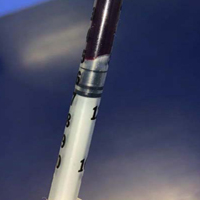 Smart Citations
Smart CitationsSee how this article has been cited at scite.ai
scite shows how a scientific paper has been cited by providing the context of the citation, a classification describing whether it supports, mentions, or contrasts the cited claim, and a label indicating in which section the citation was made.
An acquired acute methemoglobinemia from dietary sources: Case reports and literature review
Methemoglobinemia is an alteration of the oxidative state of hemoglobin. When methemoglobin values rise above 10%, the symptoms and signs related to this condition appear, such as cyanosis, respiratory problems, fatigue and headache. Acquired methemoglobinemia is characterized by the sudden onset of cyanosis in a previous healthy child, which can be due to exposure to medications or chemical substances including nitrates, copper, sulfates, chlorites, chloramines and chlorates which can be present in food and water. We illustrate two cases of acquired methemoglobinemia related to nitrate ingestion from a vegetable source.
How to Cite
PAGEPress has chosen to apply the Creative Commons Attribution NonCommercial 4.0 International License (CC BY-NC 4.0) to all manuscripts to be published.

 https://doi.org/10.4081/ecj.2021.9089
https://doi.org/10.4081/ecj.2021.9089





